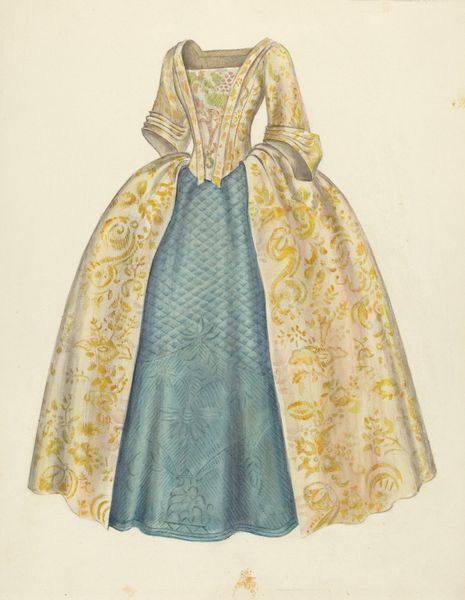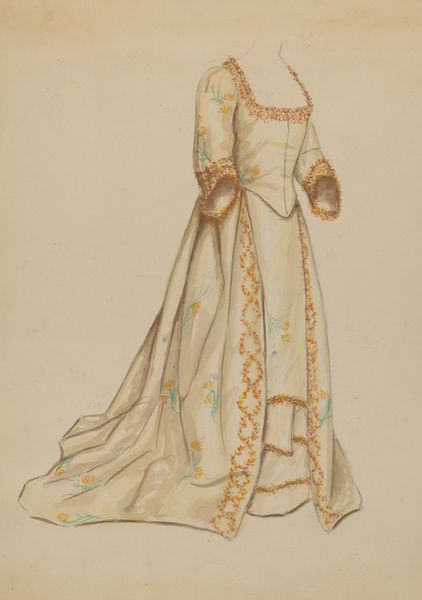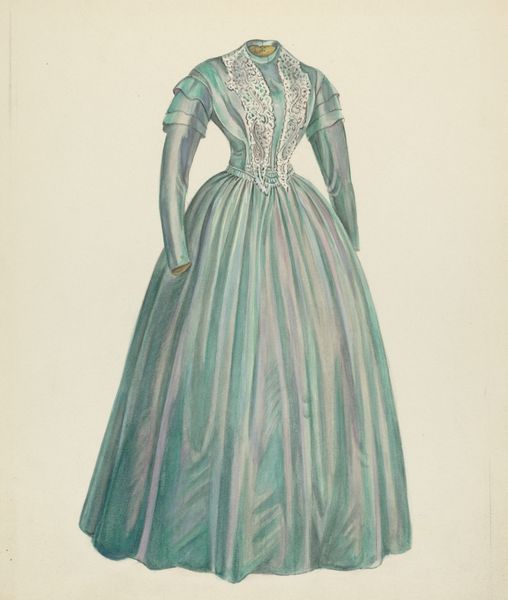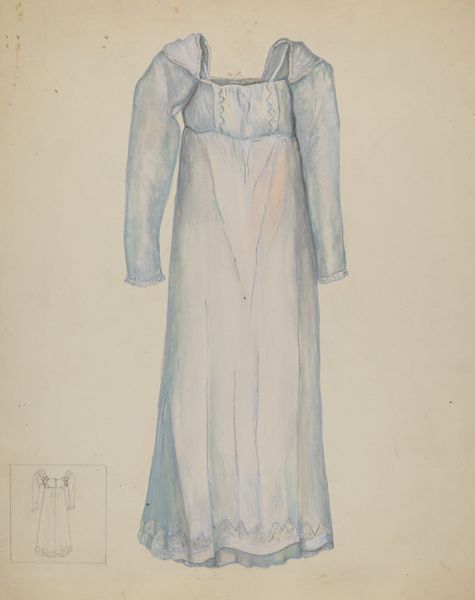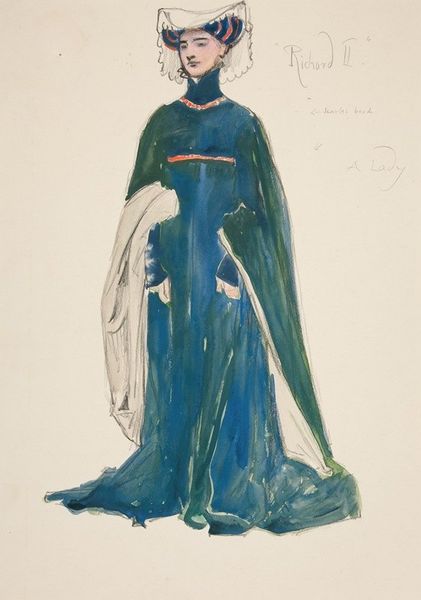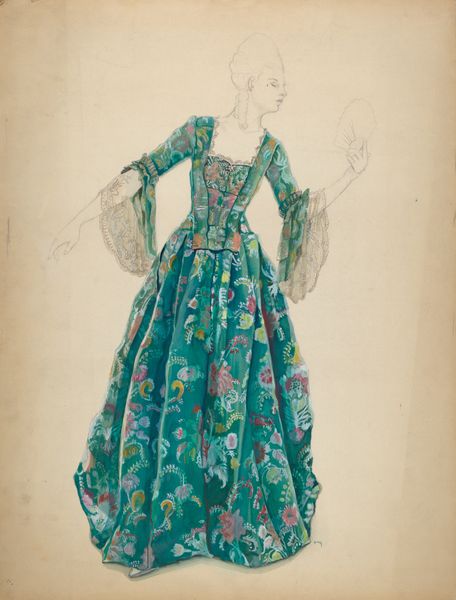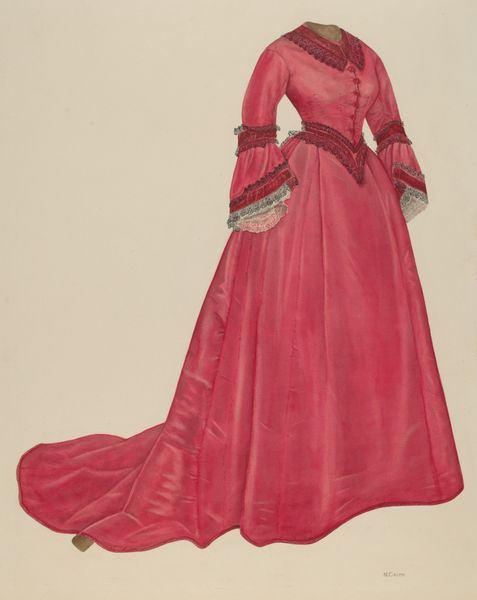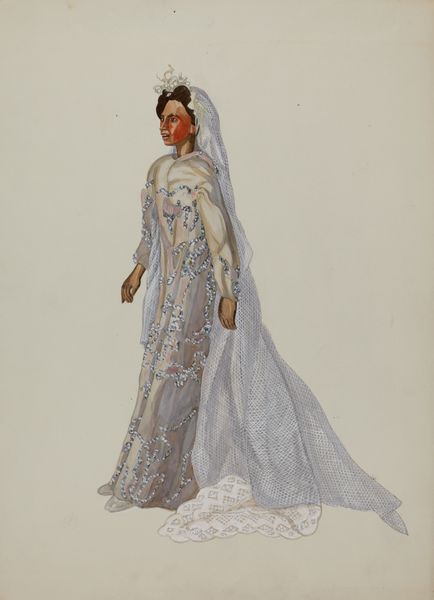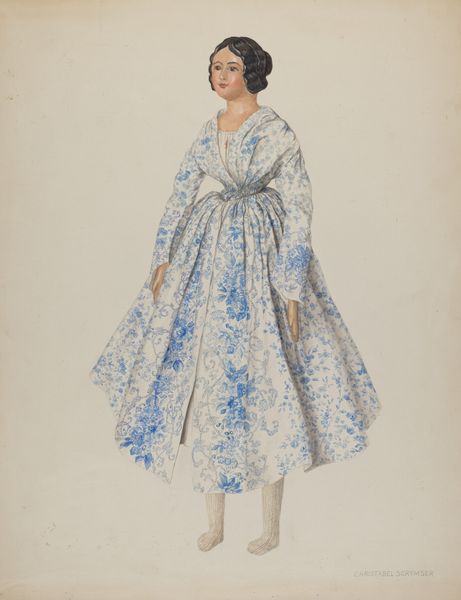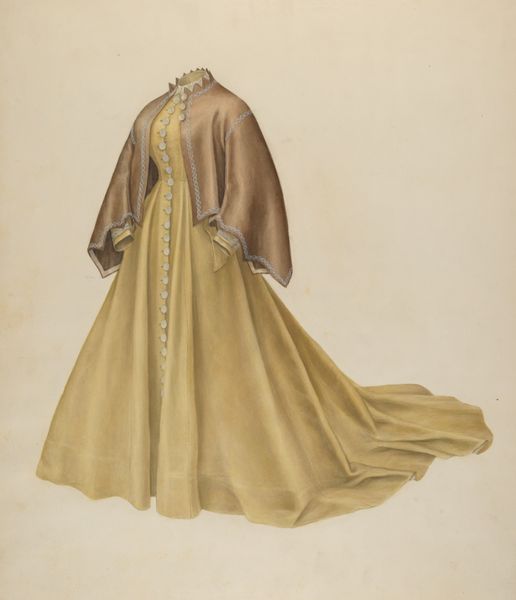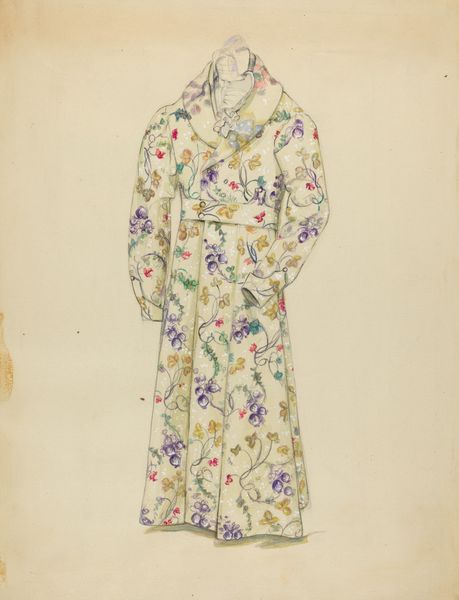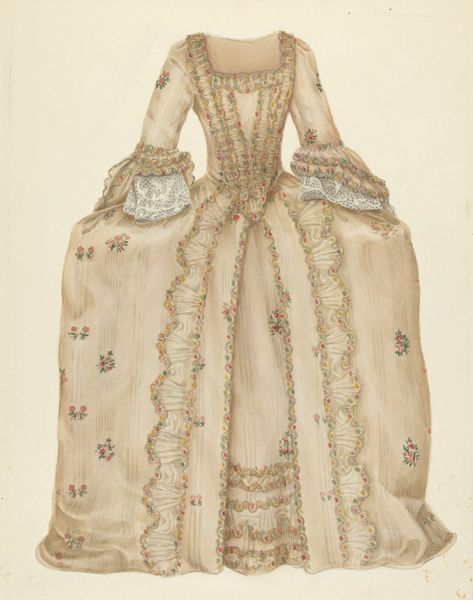
painting, watercolor
#
painting
#
watercolor
#
coloured pencil
#
realism
Dimensions: overall: 30.5 x 22.9 cm (12 x 9 in.)
Copyright: National Gallery of Art: CC0 1.0
Editor: This watercolor painting from 1936, titled "Dress," depicts just that - a lovely light blue gown draped with a delicate lace shawl. There’s something almost dreamlike about the presentation, devoid of a figure. How do you interpret this work, in light of what it could signify? Curator: I am immediately drawn to the absence you mention. What is a dress without a body? It transforms from mere clothing to an artifact, a symbol. Blue, traditionally linked with serenity, here may signify a yearning, a faded memory. Do you sense how the lace, a motif of domesticity and high society, tells another story? Editor: Absolutely, it’s evocative, especially in tandem with the dress itself. But where does the story lead? I’m interested to know why only the garment is depicted. Curator: Imagine the dress as a relic of a specific moment in time, circa 1936. Consider the socio-political backdrop - the looming shadow of World War II, the anxieties of a changing world. What does the fragility of the lace communicate to you within this context? Does the ephemeral nature of fashion mirror broader anxieties about mortality? Editor: So, the dress, then, isn't simply beautiful; it serves as a stand-in for a particular history, burdened by the fears of the era? Curator: Precisely. Think about how clothing often acts as a repository of personal and collective histories. Each thread weaves not just fabric, but narrative and experience. I see that reflected here. Editor: This painting is far more intricate and haunting than it initially appears. Thank you for expanding how I interpret the symbolic nature of the dress. Curator: And thank you. Examining these everyday symbols allows us to reconnect with historical periods in an innovative way.
Comments
No comments
Be the first to comment and join the conversation on the ultimate creative platform.
